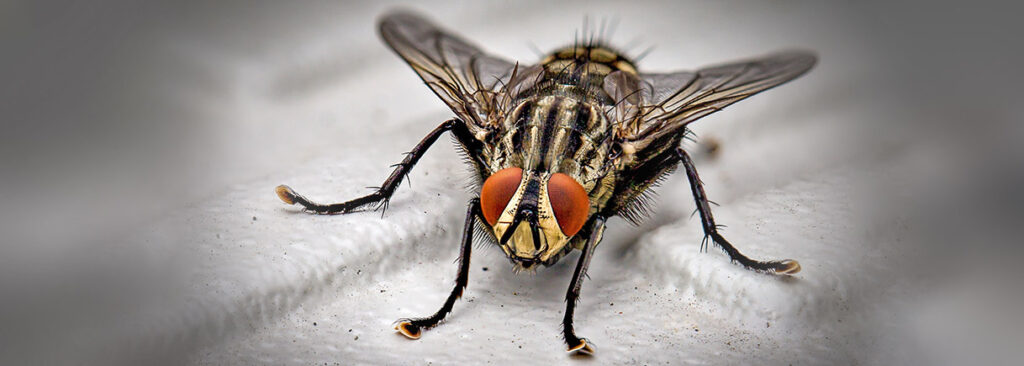
More flying insects
For other flying insects like flies (Musca domestica), fruit flies (Drosophila melanogaster), wasps (Vespula spp.) and other species (on request) a variety of test systems are available.
Depending on the requirements of our customers, direct spray tests, distribution tests and simulated-use tests in test rooms according to the valid published test methods are used.
- Insecticides
- Direct-spray tests
- Residual tests
- Simulated-use tests (test rooms, Peet-Grady method)
- Field studies
- Attractants
- Feeding tests: test of baits
- Simulated-use tests (test rooms, Peet-Grady method)
- Field studies
- Repellents
- Laboratory tests
- Simulated-use tests (test rooms, Peet-Grady method)
- Field studies
- Physical tests respectively parameters
- UV-traps: Verification of the catch
- Adhesive trap: Testing of the glue and the adhesive strength
Insecticides with the product label “Effective against flying insects” need to be tested only against flies (Musca domestica) and mosquitoes (Culex sp.) on representative basis for all other species. If individual species are listed on the label, separate efficacy proof must be provided for each species mentioned.
For practice-related tests with flying insects we have various test rooms available. In addition to insecticides, attractants and repellents, UV traps can also be tested here, which are used as devices for catching flying insects in companies that produce food.
In field studies we test the efficacy of repellents against wasps (Vespula vulgaris, Vespula germanica, Dolichovespula saxonica) during the seasonal appearance of wasps from summer to autumn. Depending on the type of data recording required, this can be achieved by direct observation or video evaluation.
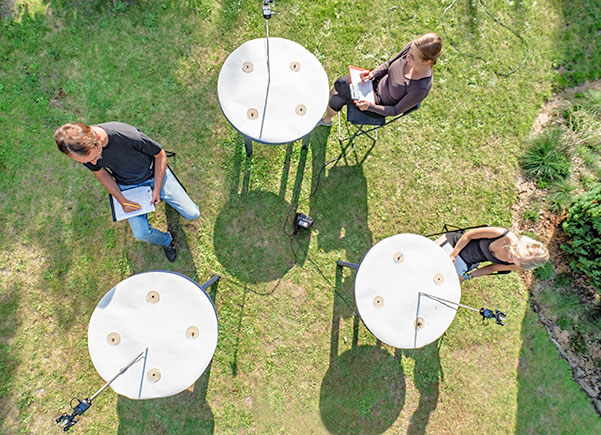
Field study to test a wasp repellent on artificial skin.. 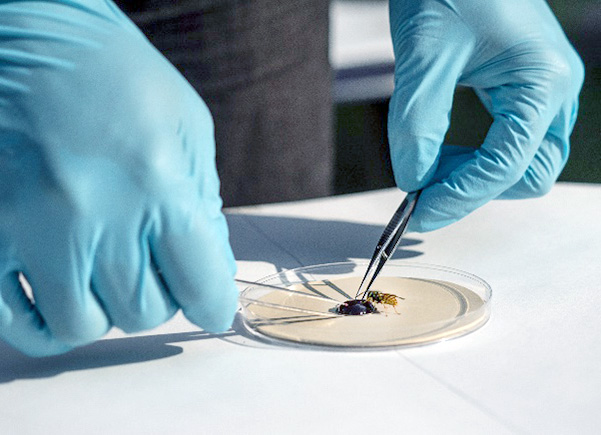
Field study to test a wasp repellent on artificial skin.
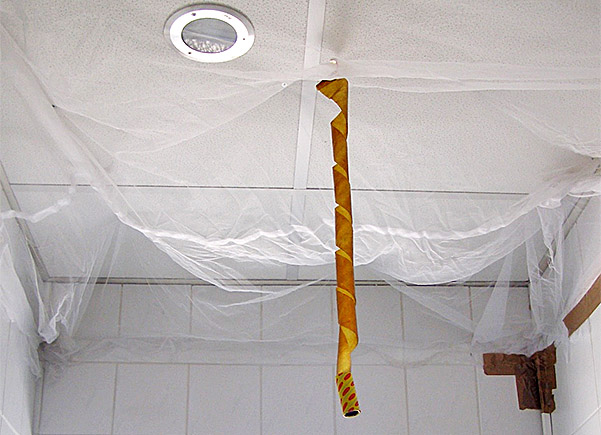
Testing of adhesive traps 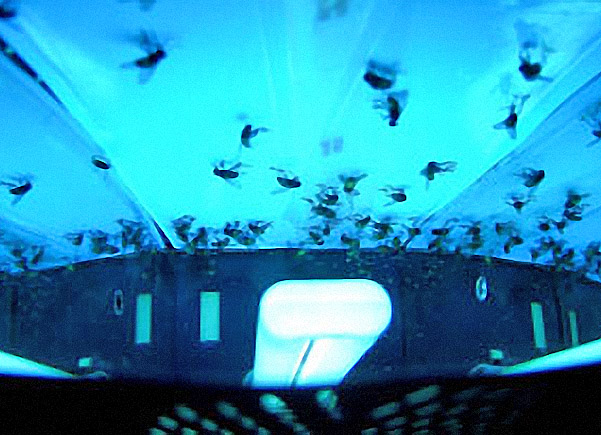
UV lamp with adhesive surface and flies already stuck 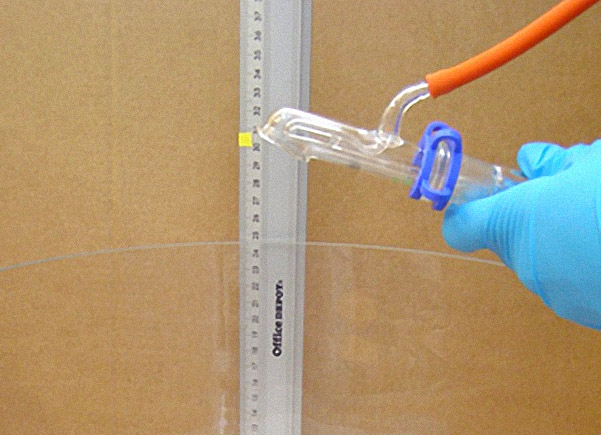
Direct-spray-test
